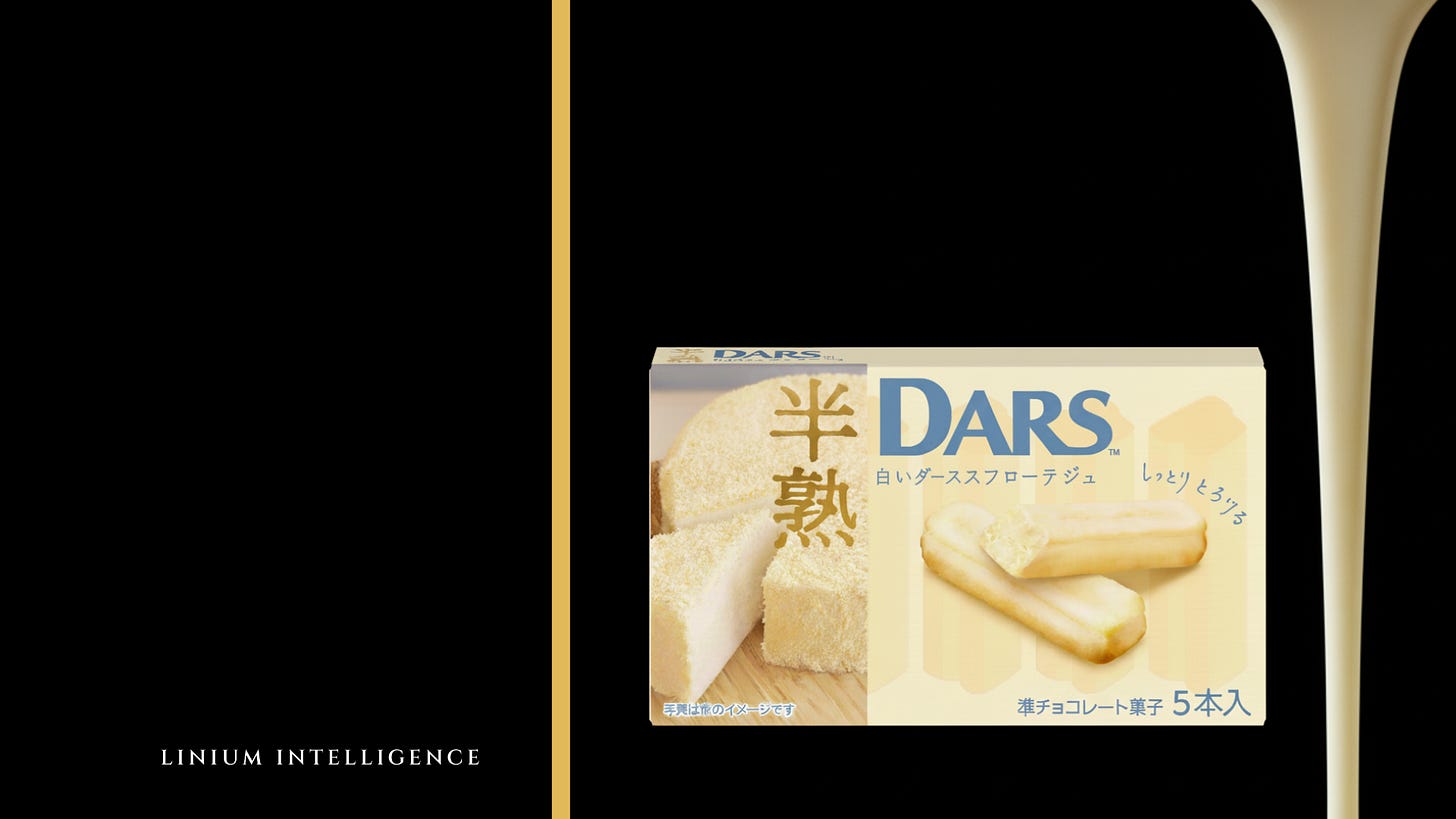Morinaga Expands Hanjuku DARS Line With New Hanjuku DARS Fromage In Japan
Morinaga has launched a new addition to its popular DARS chocolate line with the introduction of Hanjuku DARS Fromage – Soft-Baked White Chocolate Cheesecake Flavor (白い半熟ダース フロマージュ). Released concurrently with Hanjuku DARS Terrine Chocolat (半熟ダース テリーヌショコラ), the Fromage variant blends smooth, soft-baked-style white chocolate with a cheesecake-inspired flavor, delivering a creamy, melt-in-your-mouth chocolate experience. Both varieties are positioned as indulgent, premium iterations of the brand’s established line, offering Japanese consumers a choice between richer chocolate notes and lighter, cheese-accented sweetness.
The Hanjuku DARS range reflects Morinaga’s focus on texture-driven confectionery experiences, highlighting soft-centered or “half-baked” styles that appeal to the Japanese market’s growing interest in dessert-like chocolates. The launch emphasizes versatility in consumption occasions, framing the chocolates as suitable for quick indulgence moments or small personal treats.
Morinaga’s Hanjuku DARS launch fits within a broader pattern of Japanese chocolate brands innovating around flavor, texture, and seasonal offerings, as seen in multiple releases from 2025. These include global brands adapting to local preferences, as well as domestic producers creating limited-edition products that tie into holidays, seasonal motifs, and culturally resonant flavors.
Industry Trends and Observations
Texture innovation: Brands are emphasizing unique textures, particularly soft-centered or creamy chocolates. Examples include Morinaga’s Hanjuku DARS (soft-baked) and ROYCE’ Nama Chocolate (smooth, melt-in-mouth) focus on indulgent textures rather than just flavor.
Localized flavor profiles: International brands tailor offerings to Japanese tastes, often incorporating local ingredients. Pierre Marcolini’s Ganache Pur Pistachio & Sake or Ganache Pur Mandarin combines Japanese flavors with European ganache techniques. Meiji’s Almond Chocolate Crunch Okinawa Salt & Milk adapts a familiar chocolate format with puffed grains and Okinawan salt, while KitKat’s Pine Ame bar brings tropical pineapple candy into a wafer-based chocolate.
Fruit and floral infusions: Seasonal fruits and floral notes are prevalent. Lindt’s Lindor Sakura & Cream and ROYCE’ Sakura Choco Man integrate cherry blossom motifs, while Godiva’s Valentine’s Day tablets feature rose flavors, and and Coco Kyoto’s Amour assortment combines fruit and floral pairings, such as Berry x Rose and Red Wine x Fig. Seiste Chocolate’s Citrus Box emphasizes local fruits, including Kito yuzu from Tokushima Prefecture and Hiroshima lemons, underscoring the continued focus on Japanese fruit sourcing in high-end chocolate.
Ingredient transparency and artisanal appeal: Detailed ingredient sourcing, provenance storytelling, and artisanal techniques are increasingly emphasized to support premium positioning. Seiste Chocolate’s Citrus Box showcases local Japanese citrus varieties such as Kito yuzu and Hiroshima lemons, emphasizing regional sourcing. ROYCE’ frequently details ingredient origins in seasonal offerings, including single-origin nuts and locally sourced fruit in its Sakura and chestnut-themed products. Meiji’s Almond Chocolate Crunch Okinawa Salt & Milk leverages Okinawan salt to accentuate local authenticity. Across these examples, brands are using provenance, unique ingredient narratives, and craftsmanship not only to signal quality but also to connect with consumers seeking both authenticity and a story behind their indulgences.

